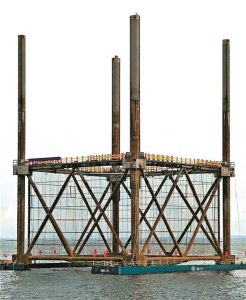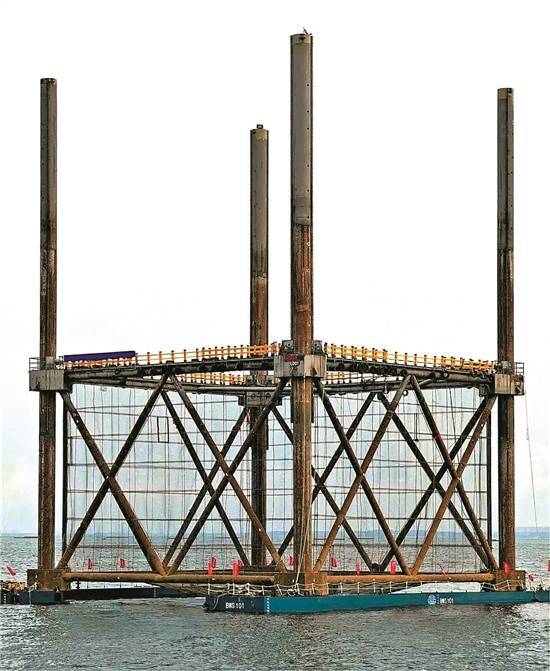A truss-type cage, often referred to as a truss reinforcement or truss reinforcement cage, is a structural element used in civil engineering and construction to reinforce concrete structures, such as columns, beams, and piles. Truss cages are typically made by arranging steel bars or rods in a truss-like configuration and then encasing them in concrete. The truss-type cage assembled with Haosail copper alloy cage net will bring many benifits to the fish farmers, not only in the cost saving, but also the fish output etc.
Here are some advantages of using truss-type cages:
- Enhanced Load-Bearing Capacity: Truss cages provide increased load-bearing capacity to the concrete element they reinforce. The truss configuration distributes loads more efficiently, allowing the structure to withstand higher loads and stresses without failure.
- Improved Structural Integrity: The truss arrangement of reinforcing bars helps prevent buckling, shear failure, and other structural integrity issues. This results in a more robust and durable concrete structure that can better resist deformation and external forces.
- Reduced Material Usage: Truss cages often require less steel reinforcement than other types of reinforcement methods, such as spiral reinforcement. This can lead to cost savings in terms of material expenses.
- Controlled Crack Formation: The truss configuration can help control the formation and propagation of cracks within the concrete. By limiting crack widths, the structural integrity of the concrete element is maintained, and potential durability issues are minimized.
- Ease of Construction: Truss cages are relatively straightforward to construct, especially for experienced workers. The arrangement of bars in a truss-like pattern is logical and easy to understand, which can lead to efficient construction processes.
- Compatibility with Various Structures: Truss cages can be used in a wide range of concrete structures, including columns, beams, piles, and other load-bearing elements. Their versatility makes them suitable for various construction applications.
- Higher Ductility: Truss-type cages can contribute to increased ductility of reinforced concrete structures. Ductility refers to a material’s ability to undergo significant deformation before failing. In earthquake-prone regions, ductility is crucial for absorbing seismic energy and preventing sudden brittle failure.
- Sustainability: Using truss cages can contribute to more sustainable construction practices by optimizing material usage and reducing the carbon footprint associated with steel production. The reduced steel consumption can also result in less construction waste.
- Flexibility in Design: Truss reinforcement cages can be designed to meet specific structural requirements, allowing engineers to tailor the configuration and spacing of the reinforcing bars to the needs of the project.
It’s important to note that while truss-type cages offer these advantages, their effectiveness depends on proper design, construction, and quality control. Engineers and construction professionals need to ensure that the truss cages are accurately placed, adequately anchored, and properly encased in concrete to achieve the desired structural performance.

On the afternoon of July 29th, 2023, the first self elevating truss type net cage made in Guangdong, actively promoted by the Guangdong Provincial Department of Agriculture and Rural Affairs, was officially launched and put into operation in the target sea area about 20 kilometers west of the southeast wharf of Zhanjiang. This self elevating truss type net cage has an overall effective breeding capacity of over 10000 cubic meters, suitable for breeding in deep water areas and capable of resisting the invasion of Typhoon 16. Haosail’s super clear copper alloy cage net is perfect for application on this truss cage, to supply a better aquaculture enviroment for the fishes raised in this cage.
